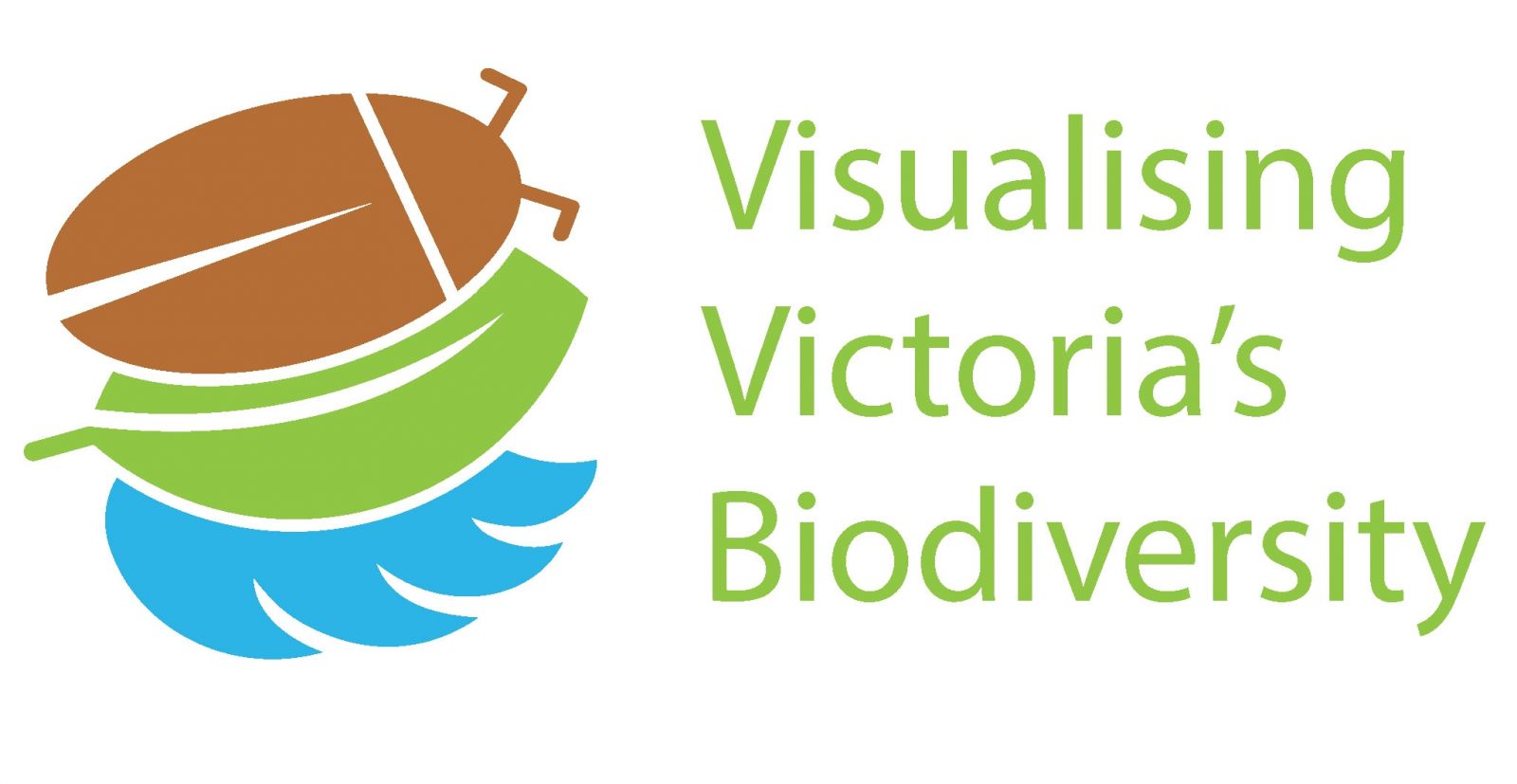Video conference notes 27 October 2016 - Indigenous ecology
SWIFFT video conference notes are a summary of the video conference and not intended to be a definitive record of presentations made and issues discussed. Aboriginal and Torres Strait Islander's are warned that this page may contain images of deceased people.
The fourth and final video conference for 2016 theme: Learning from Indigenous Knowledge of Ecology
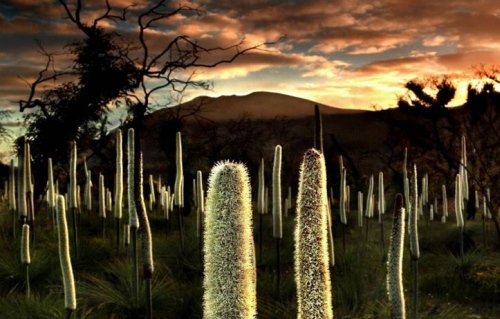
This video conference was supported through resources and technology provided by the Department of Environment, Land, Water and Planning, Victoria. SWIFFT wishes to thank speakers for their time and delivery of presentations and also Peter Johnson (DELWP) who chaired the session from Bendigo.
A total of 77 participants were connected across 10 locations; Ararat, Ballarat, Bendigo, Colac, Geelong, Hamilton, Horsham, Heidelberg (Arthur Rylah Institute), Knoxfield, Melbourne) and Orbost, (Nicholson Street, Melbourne was unavailable due to refurbishment).
List of groups/organisations in attendance;
Educational: Federation University, Deakin University
Local Government: Golden Plains Shire, Melton Shire, Moorabool Shire,
Field Naturalist Clubs: Ballarat, Geelong, Hamilton, Portland.
Community Conservation Groups: Kowree Farm Tree Landcare, Upper Hopkins Landcare, Friends of Brisbane Ranges, Wombat Forestcare, Ballarat Environment Network,
Conservation Organisations: Murray Lower Darling Rivers Indigenous Nations (MLDRIN), Barapa Barapa Nation, Dja Dja Wurrung Nation, Barham, North Central CMA, Trust for Nature, Barwon Coast Committee of Management, Conservation Ecology Centre (Cape Otway), Dept. Environment & Energy (Aust. Govt.), Parks Victoria, Department of Environment, Land, Water and Planning (DEWLP) staff across 9 locations, inc. Knoxfield and Arthur Rylah Institute, Heidelberg.
KEY POINTS SUMMARY (Quick take home messages from this video conference)
or read through the speaker summaries.
- Indigenous Fire Workshop
- Aboriginal waterway assessments
- Barapa Barapa Water for Country project
- Visualising Victoria's Biodiversity
SPEAKER SUMMARIES
Learning from the Indigenous Fire Workshop, Cape York - Dale Smithyman, Golden Plains Shire
Dale spoke about his experiences at the Cape York Indigenous Fire Workshop held on traditional lands at Mary Valley, Queensland in June 2015. Other participants from Victoria included people from Wudawurrung (Ballarat), Corangamite CMA, CFA, DELWP and Parks Victoria.
About 140 delegates were present when the group from Victoria arrived at Cape York. Dale said the workshop was a life changing experience in appreciating the use of fire in the landscape and understanding how the indigenous people use fire in Cape York.
The workshop ran over three days and contained four main components which were carried out on Country with the traditional owners. Dale felt that having the privilege of going out on Country opened up a new way of thinking in terms of how traditional owners see Country.
Traditional Burning
Lecturer – Victor Steffensen, Mulong Productions, and traditional owners, Dale and Louis Musgrave
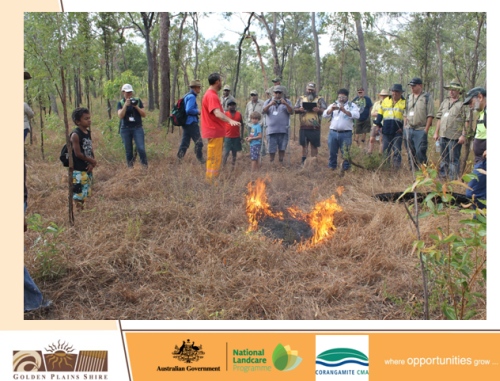
Traditional burning was the main focus of the workshop.
Traditional owners read Country by looking for indicators to burn i.e. plants and animals which they want to control or enhance. Dale spoke about burning to encourage particular plant species which can attract animals for food such as the brush turkey. Some cool, frequent fires are done early in the dry season. These burns are carried out to prevent big hot fires which are damaging to the ecology.
Many indicators are associated to story and burning to heal Country is very important. Prescriptions and objectives are based on healing of Country and not set on an issue basis. Some sites are never burnt for cultural reasons; protecting sacred places, story places and selected ecosystems and plants e.g. Callitris.
Practical traditional burning was conducted as part of the program. Burns are undertaken without fire fighting appliances but rather by reading the Country. Important messages about burning were shared, for example never burn the canopy as it cools and shades the earth and is where birds live. Fires should never be so hot as to scorch the landscape, they need to be slow and cool enough to retain habitat for animals and insects.
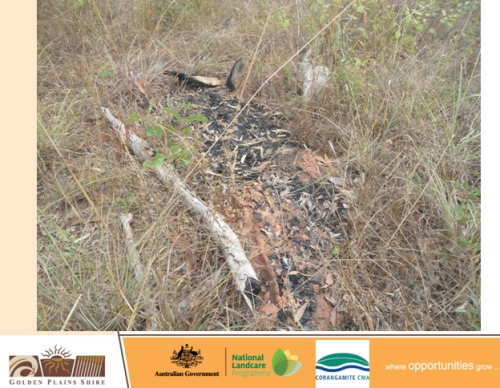
Signs where a log on the ground has been burnt because the fire was too hot which is regarded as not being good for Country.
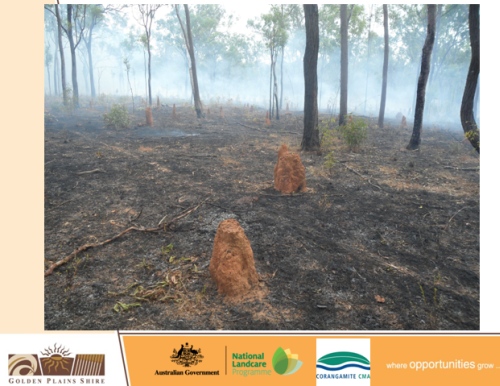
Fires are cool enough to allow refuge for insects e.g termite mounds remain intact.
Dale showed video footage of some fires that were lit up during the workshop which demonstrated methods used. Burns are done with a single source of ignition and observed before further ignition points, no drip torches were used.
Indigenous Botanical Workshop
Lecturer – Gerry Turpin, Ethnobotanist, James Cook University
- Recording the cultural uses of plants within the landscape
- Learning to look at plants and communities to better understand and read the land.
Indigenous Fire Research Methodologies
Lecturers – Peta Standley, Cape York NRM, and traditional owner, Graham.
Using western research methods to gather Customary knowledge which is incorporated in ecological monitoring and evaluation e.g. recording changes in the landscape from traditional owner burning and how this relates to plants and animals.
Recording the story - The fourth component of the workshop.
Bringing back knowledge for use in Victoria
Dale spoke about how since their return from Cape York the Victorian participants have worked to undertake a project in Victoria to teach the local indigenous people about traditional burning and to expand knowledge sharing to professional fire management people.
A small project called Wiyn-murrup yangarramela - Fire spirit comes back has been set up at Teesdale on a 3 ha grassy woodland reserve managed by Golden Plains Shire. The project is lead by the Corangamite CMA in conjunction with Wadawurrung and Golden Plains Shire. It will also incorporate knowledge from traditional owner burning from North East Victoria and possibly Cape York.
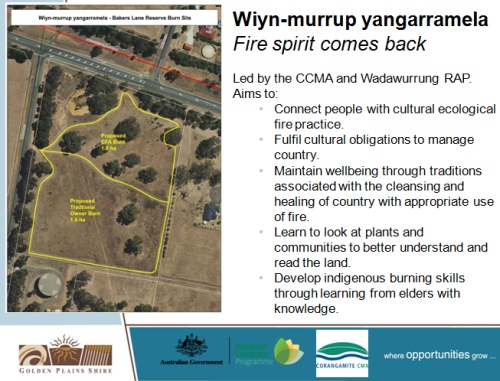
Proposed burns; using traditional owner methods (southern section) and burn by CFA (northern section).
Dale also spoke about his vision of having a small burn team to undertake burns in grassy woodlands reserves to improve management of introduced grasses and encourage the reestablishment of native grasses.
In summary, Dale highly recommended the workshop. He felt the workshop changed his perspective on the use, fear and understanding of fire in the landscape.
Key points from questions
The use of traditional burning techniques could be applied to private land managed for conservation of flora and fauna.
Aboriginal waterway assessments: new tools for realizing shared benefits in the Murray Darling Basin - Will Mooney – Executive Officer, Murray Lower Darling Rivers Indigenous Nations (MLDRIN)
Will acknowledged elders of the past and present. He mentioned that although the focus of Aboriginal waterway assessments has been on the Murray Darling Basin the concept can be applied to other areas e.g. facilitating a similar project on the Glenelg River.
Cultural objectives in water planning & shared benefits of environmental water
Will explained the Murray Darling Basin Plan has requirements to have regard for Aboriginal objectives and values in the planning and development of water resource plans. Both the Victorian and Commonwealth environmental waterway holders and CMA's are working to incorporate cultural objectives in environmental water delivery. The Aboriginal Waterway Assessment (AWA) tool is designed to help identify cultural objectives and measure outcomes. Will pointed out the AWA is one tool and there are other methodologies which can be used as well.
Aboriginal Waterway Assessment (AWA)
Rivers and waterways tend to be cultural hot spots in the semi arid environment of the Murray Darling Basin. The tool is designed to assess the cultural health of waterways and river Country. It provides for the inclusion of cultural objectives in water planning.
The AWA is Traditional Owner led, they design the program, undertake assessments, retain the data and receive training on how to replicate the work over time. MILDRIN works in close association with the Traditional Owners to develop the program.
The AWA tool is designed to deliver consistent and comparable results across different areas of Country at different times. It uses science and western based planning systems and decision making frameworks for water delivery.
The AWA tool is based on a partnership approach building collaboration between water management agencies and Aboriginal organizations. It assists in developing long term pathways for Aboriginal people to have meaningful input to waterway planning.
The program is designed to be inclusive drawing from a range of contemporary and traditional knowledge allowing learning, transfer of knowledge and reconnection to Country.
Development and application
Will explained the AWA was adapted from the Maori Cultural Health Index in New Zealand.
- Participants assess the cultural value and environmental health of sites on Country, using a scoring mechanism.
- Scores and qualitative data are used to define objectives for water management and NRM.
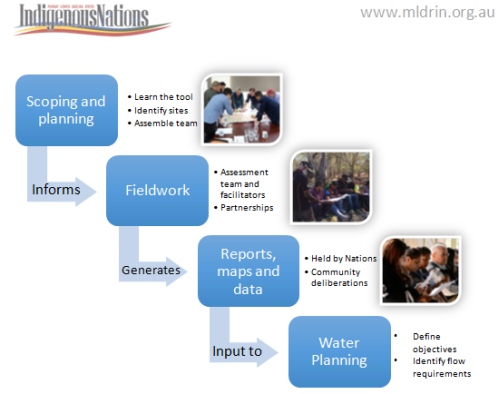
The process for development of water planning is facilitated by MLDRIN but engages the indigenous community to quantify their values and objectives with all the knowledge and resources gained in the process being held by Nations for input into water planning.
Will spoke about the worksheet matrix which is used when undertaking site visits. The sheet aims to identify and rank important cultural sites together with cultural significance, cultural use and river health. The key use of the comparative scoring system is to allow Aboriginal people to identify priorities which can result in meaningful input into realizing shared benefits from the water planning process.
AWA projects as at October 2016
Will discussed current projects and pointed out the Glenelg Project is the first project outside the Murray Darling Basin where the AWA Tool is being used.
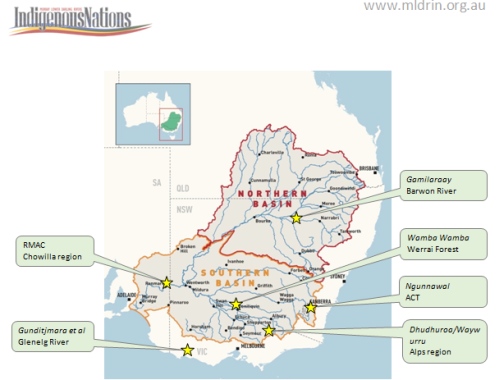
Learnings and next steps
Will spoke about some of the positives and challenges which have shown up during the first six projects.
The AWA generates diverse outcomes beyond gathering data, it develops diverse relationships and has had some very strong outcomes in reconnecting people to their country and transferring knowledge between age groups and people with different backgrounds.
The AWA is really only the start of the process which is supported by community deliberations, technical support (hydrological modelling) to define flow requirements. It is also part of the process in building communication between Aboriginal communities and waterway managers.
The AWA received funding from the Victorian Government via DELWP in 2016 to undertake the next project in the Gunbower area.
Cultural flows research project
This is a major national ground breaking project being managed through the secretariat of the National Native Title Council with MLDRIN and the Northern Basin Aboriginal Nations (NBAN) being members of the research and planning committee.
Aims include developing methodologies to help Aboriginal people to identify requirements regarding Cultural Flows. What are their objectives and what they would use the water for. The project also incorporates means of developing policy, legislative and governance reforms to support cultural flows.
The concept of cultural flows was developed and defined by MLDRIN. It is a way of managing environmental water to achieve cultural objectives or Aboriginal environmental outcomes which can also include economic benefits to Aboriginal communities.
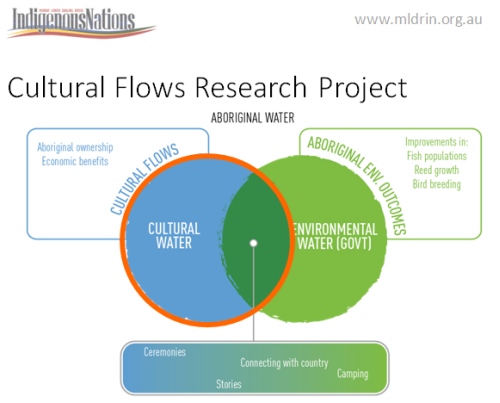
‘Cultural Flows are water entitlements that are legally and beneficially owned by the Indigenous Nations and are of a sufficient and adequate quantity and quality to improve the spiritual, cultural, environmental, social and economic conditions of those Indigenous Nations.
This is our inherent right.’ The Echuca Declaration, September 2010
Cultural flows methodology
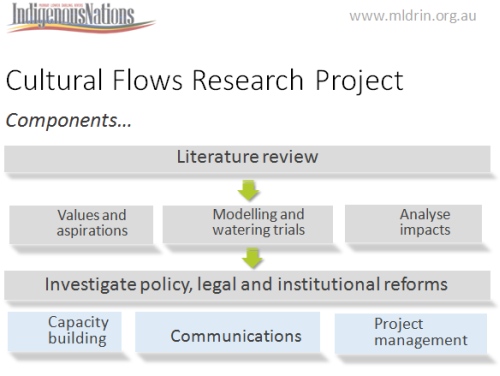
Will said the work is driven by the question; how do you support cultural objectives in the management of environmental water? And increasing the acceptance of the concept of shared benefits.
Using the right methodology
Will spoke about the range of tools which can be used, reflecting the priorities and capacities of different First Nations for achieving cultural objectives. e.g.
- Aboriginal Waterways Assessment
- Ngarrindjeri Yanarumi index
- Use and Occupancy mapping
- NSW Aboriginal Water Initiative ‘Asset Collection’
- Cultural Flows project methodology
Key points from questions
- It can take up to one year to complete the Aboriginal Waterways Assessment process.
- Each one of the traditional owners fill out their own form sometimes in groups or individually.
- Analysis of the forms can be used to gain information on from different gender, age groups etc.
- Processes are put in place where elders can share their knowledge with younger generations helping to increase connection to Country.
More information: Murray Lower Darling Rivers Indigenous Nations (MLDRIN)
Barapa Barapa Water for Country project - (Barapa Barapa Traditional Owners) Uncle Neville Whyman, Uncle Ron Galway, Uncle “Ducky” Charles, Dixie Patten and Robyn McKay
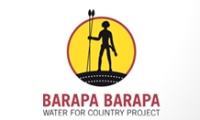
This presentation was presented by Uncle Neville, Uncle Ron, and project officer Robyn McKay.
Uncle Ron acknowledged the Traditional Owners of this Country, the Elders past, present and emerging.
Barapa Water for Country pilot project is a partnership between Barapa Barapa people and the North Central CMA aiming to recognise cultural values of the Gunbower Forest and incorporate them into the water management of Gunbower Forest.
Robyn spoke about how water management is generally considered to be either for consumptive or environmental purposes but neglecting cultural use, or Aboriginal water. Victoria’s new water plan - 'Water for Victoria' specifically recognises Aboriginal values and objectives of water therefore needs to be included in water management of the Gunbower.
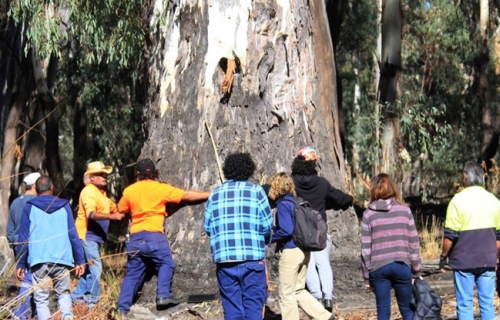
Uncle Neville spoke about passing on cultural knowledge of ageing a tree. This one being a 700-800 year old red gum.
The Barapa Barapa people have had a unique cultural connection with their Country since time immemorial and have been the custodians of the waterways for thousands of years. The health of our waterways can’t be separated from the Barapa Barapa people's cultural and spiritual identity.
Robyn spoke about how the Barapa Water for Country project helps to reconnect people to Country and is a means of passing on cultural knowledge to younger generations.
River people
Uncle Ron spoke about the location of Barapa lands which extends from Echuca to Swan Hill and is one of the wettest parts of the Murray. He said their Country was rich in resources and once supported a large tribe of powerful and strong well built people between 6-7ft tall.
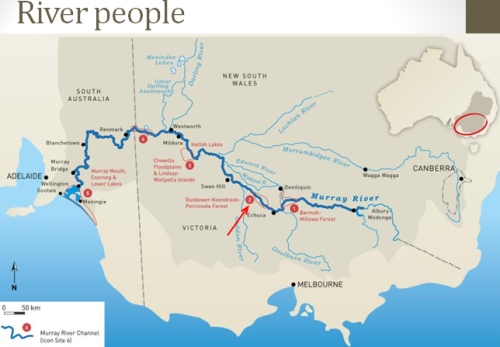
The Gunbower Forest is the heartland of Barapa Country, shown on the map as No. 2 (red arrow).
Monitoring
Uncle Ron spoke about monitoring using exclusion cages to see what effect carp maybe having on aquatic plants.
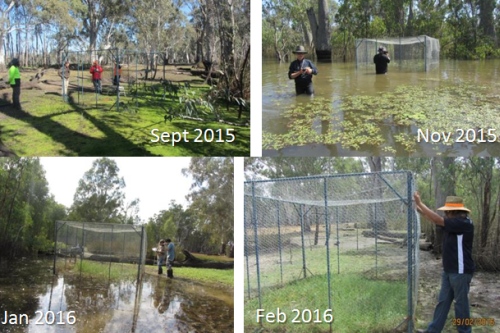
Exclusion cages monitored before during and after environmental watering demonstrate good growth of River Swamp wallaby grass inside the cage and impact from carp outside the cage (lower right).
Robyn said the program builds knowledge as Barapa people learn how to use modern technology to record, monitor and evaluate sites, but in culturally appropriate ways. An important part of the program has been to develop their own methodology of assessing sites culturally, and creating a framework to guide the development of cultural watering objectives.
Building knowledge of cultural sites
Uncle Neville spoke about partnerships between Barapa people and the North Central CMA over the last 3 years to identify, record and map cultural and spiritual values which can be incorporated into the water management of Gunbower Forest.
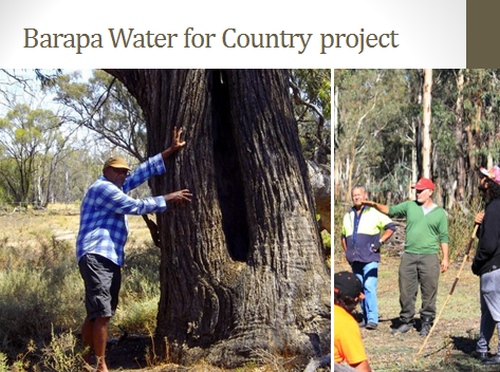
Scar tree with about an 8 ft scar, the bark most likely used for a shield, possibly a burial or to carry things.
Uncle Neville said they have only just begun to scratch the surface finding scarred trees, stone tools, earth mounds (living areas) and shell middens. We recorded plants used for food, fibre, tools, ceremony and medicines.
Earth mounds and middens are time capsules showing the most productive places where people lived, what they ate and how long ago. Cultural heritage sites indicate where water usually flowed and where it didn’t. This information can help in planning and getting the best value from water, but is often ignored.
This knowledge is giving a window into the past, that can inform and improve future management.
Uncle Neville said it is the Barapa people's inherent responsibility to look after their Country – to heal the damage of the past and preserve culture and the environment for future generations. He said they want further opportunities to be actively involved in the management of their Country - "to speak for, care and work on Country, and advocate for what’s important to us (not just pest plant and animal control). Our cultural heritage is threatened like many environmental values".
The Barapa people collect medicine plants just as Barapa people have been doing for generations. The Barapa people want to be able to continue to do this but can’t if the watering regime is not right or if they don’t have access to the places and resources.
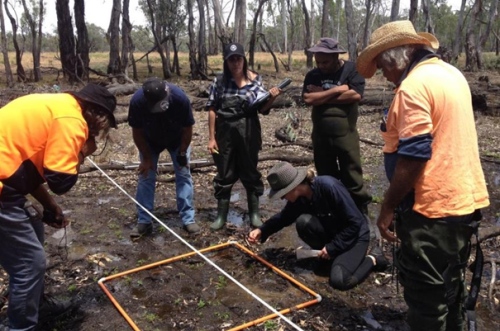
Western science working beside Cultural science for practical land management. Projects such as water quality monitoring, fish monitoring, water bugs, vegetation assessment and photo points are all integrated into the project.
When government people and contractors have been involved in the project with Barapa people they have walked away seeing things differently.
Traditional Owners welcome scientists and researchers on Country and ask that they acknowledge and respect Barapa people when conducting field work. Notifying Traditional Owners about what’s happening and the work being undertaken is a way of showing respect.
Future generations
The Barapa people value the knowledge that’s been handed down from the Elders and recognise the need for cultural knowledge to be passed down through the generations to be kept. The places, sites, habitats and resources need to be there to show thier children, and their children’s children. These are the Barapa people's traditional educational homelands of learning.
Message stick
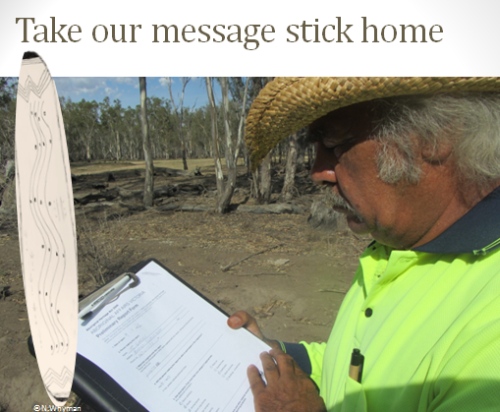
Uncle Ducky with message stick designed by Uncle Neville Whyman - Our message is to spend time on Country with us to learn a cultural perspective. He said, since we have been coming back doing this program we have seen things coming back with the traditional water flow.
"For Barapa people cultural perspective means everything is inclusive not looking at the land and water as a resource to take or use. We look at it as something to care for and maintain, the water is the very essence of our being – a traditional resource. It is only through willingness of people just like you that we can break down the barriers in policy, legislation and practice that restrict our access and participation in management. You are our challenge and our greatest hope for change".
"Please apply our message stick for a safe journey home".
Acknowledgement was made to funding by the Victorian Government (Dept. Environment, Land, Water and Planning) and the Murray Darling Basin Authority also support of the North Central CMA.
Members of the steering committee who were unable to attend; Uncle Ducky, Dixi, Sharnie, Aunty Esther and Glenn.
Barapa Water for Country video
Visualising Victoria's Biodiversity (VVB) - Rob Milne, Centre for eResearch and Digital Innovation (CeRDI), Federation University.
Rob provided a verbal update on the project which recently went live, now providing access to the mapping portal which includes over 50 layers of spatial information and a wide variety of biodiversity data sets from local, regional, State and Federal sources.
The VVB now provides a base for the community to add projects and conduct searches. It also provides a report tool which users can use to select a search area to create a tailored report.
The project team is very interested in receiving feedback regarding functionality and data sets from the community. A more detailed demonstration will be provided in the 2017 video conference.
Previous information on the project
General discussion key points
The Northern Australia Environmental Research Portal has a site specifically on Developing Protocols for indigenous fire management partnerships. A review of traditional burning has recently been completed and it is highly recommended to look at this review if you are working in the indigenous fire, traditional knowledge space.
KEY POINTS SUMMARY
| The traditional burning workshop at Cape York was a life changing experience for participants and opened up a new way of thinking in terms of how traditional oweners use fire. |
| Traditional burning is carried out to heal Country, fires should never be so hot as to scorch the landscape, they need to be slow and cool enough to retain habitat for animals and insects. |
| The Aboriginal Waterway Assessment (AWA) tool is designed to help identify cultural objectives and provide long term pathways for Aboriginal people to have meaningful input to waterway planning. |
| Cultural flows are part of managing environmental water to achieve cultural objectives or Aboriginal environmental outcomes which can also include economic benefits to Aboriginal communities. |
| The Barapa Barapa Water for Country project aims to recognise cultural values of the Gunbower Forest and incorporate them into water management of the Gunbower Forest, the heartland of Barapa Country. |
| The Barapa Barapa people have had a unique cultural connection with their Country since time immemorial and have been the custodians of their waterways for thousands of years, which is part of their cultural and spiritual identity. |
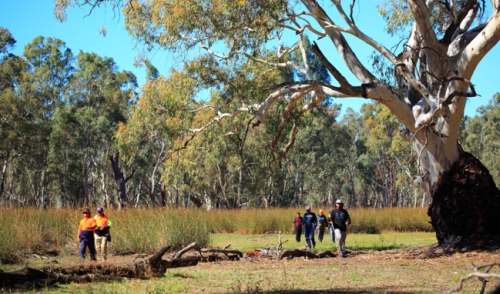
Other SWIFFT video conference notes 2016
Other SWIFFT Seminars with Indigenous Cultural themes
- Cultural Protocols, Threatened Species and Traditional Knowledge
- Two ways of knowing natural temperate grasslands of the Victorian Volcanic Plain
- Returning Dja Dja Wurrung to the landscape
- Gunditjmara fish, mussels & crayfish
- Indigenous knowledge of ecology
- Indigenous Fire Workshop, Cape York
- Aboriginal waterway assessments
- Barapa Barapa Water for Country project



